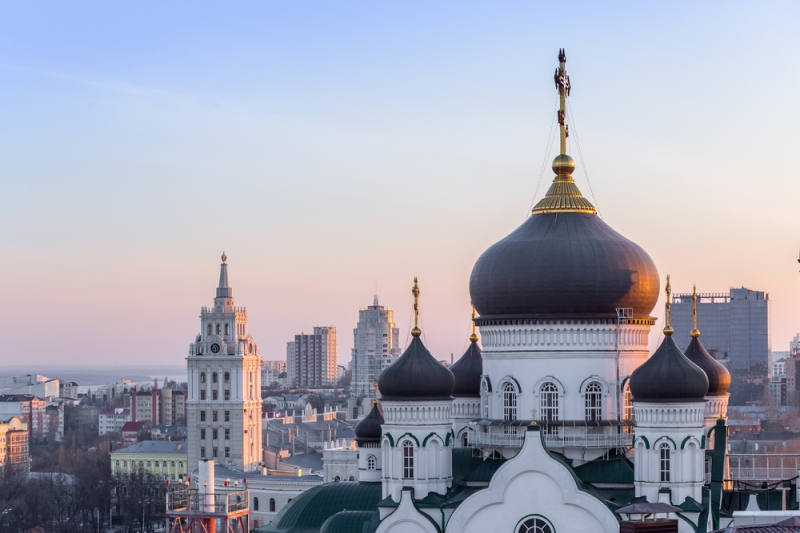
Voronezh is not the first thing that comes to mind when we think about where to spend our vacation. Nevertheless, its surroundings represent a rather unique area for central Russia. Here, many cave temples are concentrated in a compact area, the surface of the earth is cut by winding canyons and snow-white chalk quarries, and in the south of the region there is even its own desert. The region is not deprived of objects of historical and cultural heritage.
In the Voronezh region you can spend an active weekend or go here for a whole week to immerse yourself in exploring the local beauties, either with a tent or staying in one of the hotels in the capital of the region.
Much of the local attractions are outdoors, making it an ideal family outing. After all, among forests, fields and caves, children are never bored, and besides, you can touch everything with your own hands. And parents don’t need to worry that a noisy family will disturb others—there’s enough space for everyone.
How to get there
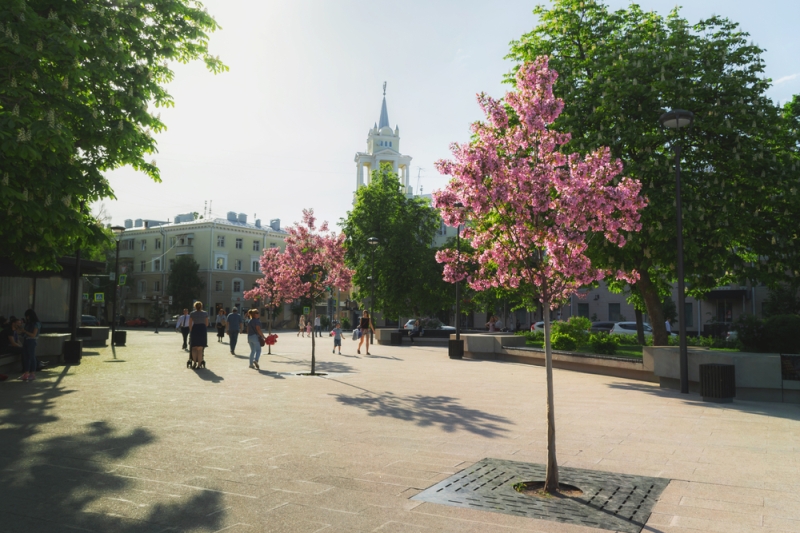
Photo: Anna_Zaitzeva/Shutterstock.com
Planes fly to Voronezh from Moscow (1 hour 15 minutes, one-way ticket about 5,000 rubles), St. Petersburg (2 hours, about 8,000 rubles) and other large cities of Russia.
The train from the capital runs 7 times a day. The ticket costs from 800 rubles to 3,500, the journey will take 6-13 hours.
You can get there from Moscow by bus in about 8 hours, paying 800 rubles for a ticket.
The M4-Don highway is one of the newest and fastest in Russia (the distance from Moscow to Voronezh is 520 km, travel time by car is about 6 hours). When calculating the cost of the trip, do not forget that the route is toll.
You can travel around the region by trains and regional buses. In addition, you can book a car on the spot and not depend on public transport schedules. The most popular locations can also be reached as part of an organized excursion from Voronezh.
Where to stay

Voronezh offers more than 400 accommodation options at prices starting from 500 rubles per bed in a hostel and up to 4,000-5,000 rubles per room in hotels of the world famous chains Holiday Inn, Hilton, Ramada, Marriott.
In small towns you can rent an apartment or a room in a non-chain hotel at a price of 1,000-2,000 rubles per room (apartment).
- Hotel “Artik”. Per night for two from 1,800 rubles.
- Hotel “O’Hara”. Per night for two from 3,300 rubles.
- Ramada Plaza Voronezh City Center. Per night for two from 4,300 rubles.
What to see
1. Natural architectural and archaeological museum-reserve “Divnogorye”
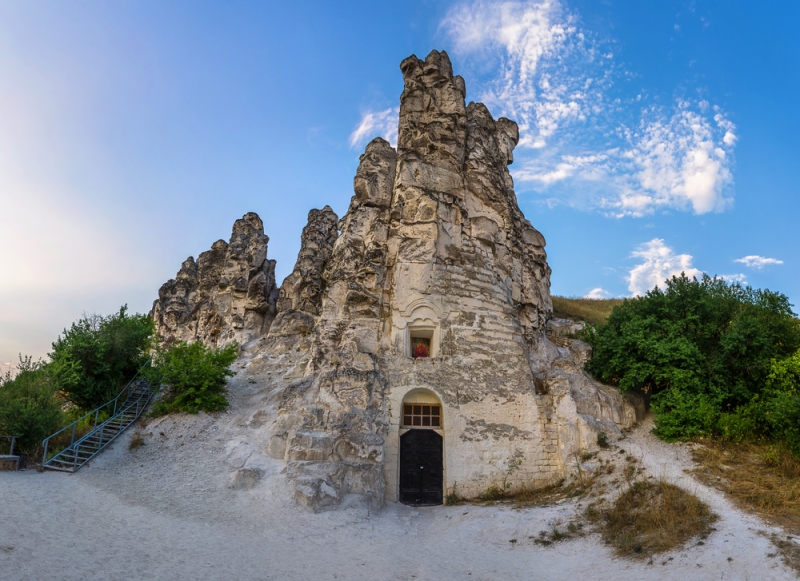
The reserve occupies an area of 11 km² on the bank of the Don, rugged by gorges. First of all, guests come here to get acquainted with historical monuments: in total, 48 objects were found on the territory of the museum-reserve, the oldest of which date back to the Late Paleolithic era. Among them are the ruins of the medieval Mayatskaya fortress, a cave temple of the 17th century, cult caves and complexes carved into chalk rocks.
The second reason for the popularity of these places is their attractiveness for nature lovers. Here you can wander through the meadows for hours, listen to the birds singing, and look at the chalk outcrops in the canyons. Many people are familiar from photographs with the view of chalk pillars-remnants, called divas, towering over the steep banks of the Don. And the local Grand Canyon stretches for a whole kilometer.
Tip: take plenty of drinking water with you for a long walk in the hot summer.
Archaeological, ethnographic, ornithological, and photo excursions are held in Divnogorye. You can get acquainted with the Stone Age era in the “Paleolithic Workshops”, where master classes on the manufacture of primitive tools are held. The archaeological park “From Nomads to Cities” has been opened, dedicated to the medieval culture of the Khazar Khaganate (the nomadic Khazars settled on the banks of the Don in the 9th century, traded, built settlements, and collected tribute from the Slavs).
You can walk around the territory of the reserve on your own or as part of an excursion. The duration of the organized walk is 2-3 hours, held from 10:00 to 18:00 from May to September.
Visiting the reserve without a tour is free. With a visit to the excursion – from 120 to 380 rubles depending on the topic.
On the territory of the reserve there is a camping area and a hotel, as well as several shops and cafes.
To get there by public transport, you need to take the train to Voronezh square. “Divnogorskaya”.
Contacts: divnogor.ru
2. Beaver town in the Voronezh Biosphere Reserve

The reserve offers visitors two eco-trails, the Museum of Nature and the Museum of Fires, as well as a visit to the rope park. But the most unusual thing is the beaver town.
At the beginning of the 20th century, beavers in the Russian Empire were actually on the verge of extinction. And it was here, near Voronezh, that an experimental nursery (originally a beaver farm) appeared in 1923. His employees studied different subspecies of river beavers, learned how to properly catch them and create conditions for the reproduction and subsequent resettlement of animals. And now the situation is such that half of all beavers living in Russia were born in Voronezh.
The building (shed) is open for visiting where beavers are kept, and a two-level aquarium with a family of beavers, as well as the interactive museum “The Beaver’s House”. Guests will be told about how these animals live and what they eat, as well as the rules for breeding them in captivity. You can even pet some of the animals, and children can try themselves as dam builders.
Working hours: Tue-Sun from 9:30 to 18:00 without a break (Mon – closed).
Visit cost: 270 rubles.
There is a tourist complex on site that provides accommodation and catering services for guests.
You can get to the reserve from Voronezh by bus or train to Grafskaya station and then by bus to the “Reserve” stop.
Contacts: zapovednik-vrn.ru
3. Belogorsk Cave Monastery

Photo: Funny Solution Studio/Shutterstock.com
According to legend, the Resurrection Belogorie Monastery appeared at the end of the 18th century, when the daughter of a Ukrainian Cossack, Maria Sherstyukova, in atonement for her own sins, founded a community in Belogorye and began digging caves in the mountainside.
During its heyday at the end of the 19th century. there were 212 caves, the total length of the tunnels was more than 2 km and a large Resurrection Church was built in the Byzantine style. After the revolution, most of the underground premises were destroyed, the passages were filled up or used as a granary, and then the monastery was abandoned. Restoration began only in 2003
Currently, 900 meters of tunnels have been opened, descending underground into five levels, and two cave temples: the upper one – of the Holy Blessed Prince Alexander Nevsky and the lower one – of the Holy Spirit. The impression of spending more than an hour descending inside the rock with a candle in hand is a little depressing, but at the same time solemn.
Tip: underground is always cool (+8-10°C), even in summer you need to take warm clothes with you.
You can get into the monastery tunnels only as part of a guided tour, which runs daily from 10:00 to 18:00. You may have to wait until a sufficient number of people have gathered (you can also arrange a visit by phone in advance). The duration of the excursion is about 2 hours, it is conducted by the inhabitants of the monastery for donations.
To get to Belogorye by public transport, you need to take a bus at the Central bus station next to Rossosh or the village of Podgorensky and go to the Belogorye stop.
Contacts: belmon.ru
4. Kostomarovo
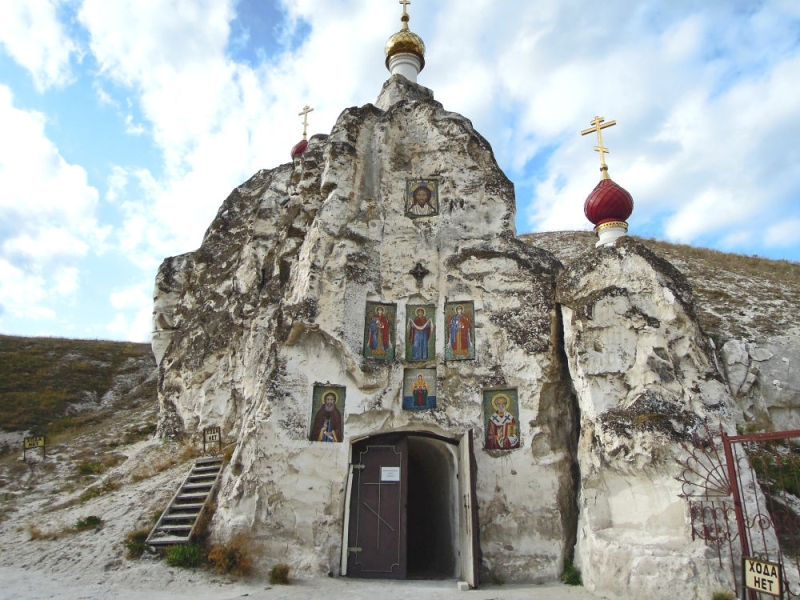
Kostomarovo is called Russian Palestine. Snow-white chalk divas, golden domes shining in the sun, bright frescoes on the walls of temples, slopes of the surrounding hills covered with bright green grass and the ringing of bells – near the village of Kostomarovo under Mount Tabor is located one of the most picturesque temples in the region.
Kostomarovsky Holy Spassky Convent has existed for at least 900 years. The exact time of its appearance is unknown, but there is a version that the first caves in the thickness of the chalk mountain were created by Christians who fled from Byzantium in the 1st century AD. Since then, the temple has been constantly being built and expanded. Until the monastery was closed after the 1917 revolution.
Now the monastery includes two main cave temples, an above-ground church, buildings for pilgrims and cave cells. The entrance to the most ancient and spacious Spassky Church is located in the diva rocks under the bell tower. There is also its own Mount Golgotha with a worship cross on top.
You can explore the premises of the temple on your own during the daytime (until 16:00) or by pre-booking a tour.
The most convenient way to get to the monastery is by train from Voronezh to Rossosh to Podgornoye station, and then by bus to the village of Kostomarovo.
Contacts: kostomarovo.ru
5. Don Sahara
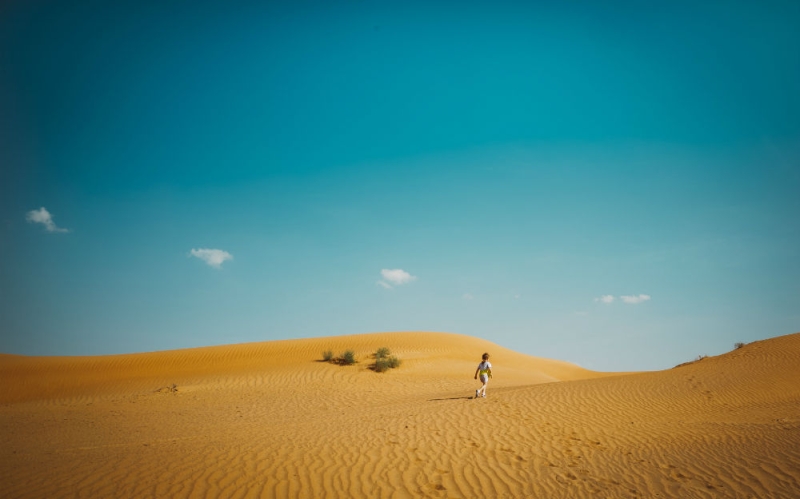
No matter how unexpected it may sound, the Voronezh region has its own desert. Officially, the area is called the Don Hills, but in reality you will see sand dunes.
They were formed during the Ice Age and were planted with pine trees and willows in Soviet times to stop the spread of sand. This is a real paradise for SUV drivers and off-road enthusiasts. And also for photographers and everyone who wants to capture themselves against the backdrop of exotic landscapes without leaving the country.
You can only get closer to the sands with a prepared car: already at the approaches to the dunes on the dirt road there are long sandy pits. If you have neither an SUV nor the desire to follow a tractor, it is better to take a walk from the village of Dedovka.
6. Palace complex of the princes Oldenburgsky in Ramon
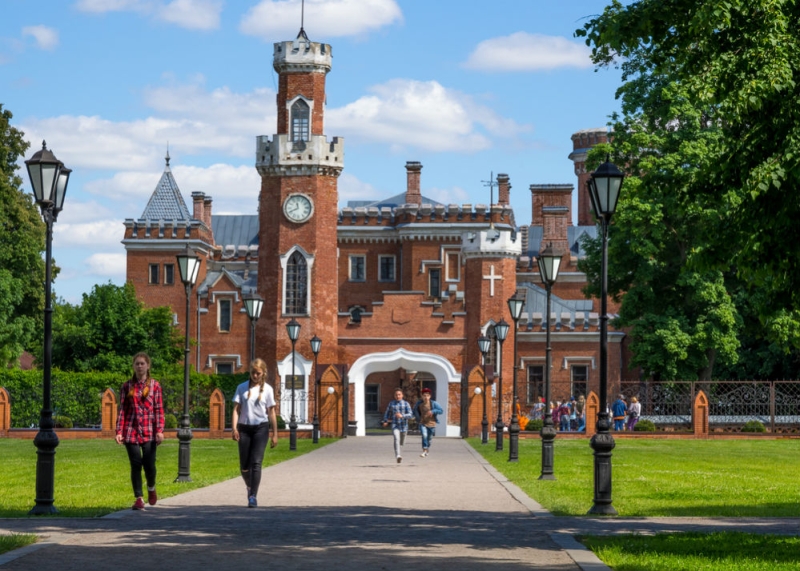
Photo: VPales/Shutterstock.com
You can touch the images of Tsarist Russia by visiting the palace of the Princes of Oldenburg in Ramon. It was built in the Old English style at the end of the 19th century, and it was owned by the Princess of Oldenburg, granddaughter of Emperor Nicholas I.
Excursions are conducted around the first floor of the palace and the Suite building; guests walk around the park on the territory of the landscape and architectural complex on their own.
Operating hours: Wed-Sun from 10:00 to 18:00.
Cost for visiting open buildings: 150 — 200 rubles.
You can get to Ramon by bus from Voronezh.
Contacts: dvoretsvramoni.ru
Other
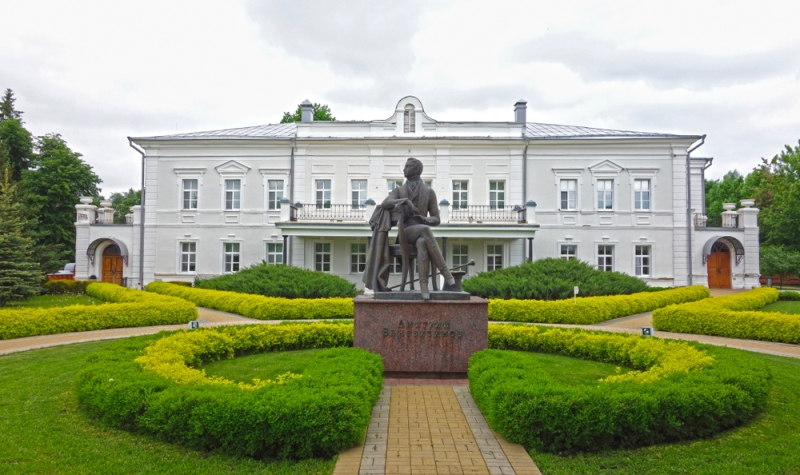
In addition to the six listed objects in the Voronezh region there are other unusual and worthy of visiting, although less well-known locations.
- Cave monastery near the village of Shmarnoye (Shmarnenskaya Cave).
- Archaeological Museum-Reserve “Kostenki”.
- Mount Shatrishche and Shatrishchegorsk Cave Monastery (Shatrishchegorsk Cave).
- Chalk gorge in Uryv and the grave of the Red Army soldier Cholponbai Tuleberdiev. & nbsp;
- Gorokhovskaya Cave.
- Khopersky State Nature Reserve.
- Lomovskaya Landscape Park.
Text author: Ksenia Chesnokova

